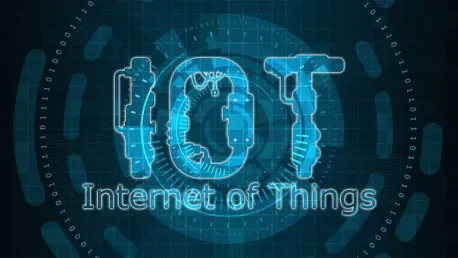In an age where technology continues to evolve at a rapid pace, the Internet of Things (IoT) is making a significant impact on the healthcare industry by enhancing patient-provider communication through real-time data sharing and personalized services. This technological revolution is especially crucial given the global challenges facing healthcare systems, such as limited access, slow care delivery, and suboptimal patient outcomes.
The IoT healthcare market, valued at USD 139 billion in 2023, is projected to reach a staggering USD 822 billion by 2032, with an annual growth rate of 21 percent. The Asia Pacific region spearheads this growth, holding a substantial 40 percent of the market share due to the increasing adoption of IoT-based solutions.
Traditional healthcare systems have long struggled with inefficiencies, where limited access and delays in care have been further exacerbated by the COVID-19 pandemic, particularly in rural areas. For instance, only a mere 2 percent of qualified consulting doctors in India are based in rural regions, while an overwhelming 75 percent are concentrated in urban areas, creating a significant access disparity.
IoT is reshaping healthcare by improving communication and data sharing between patients and providers. Remote Patient Monitoring (RPM), involving devices like fitness trackers and smartwatches, allows for health monitoring from afar. In 2023 alone, over 250 million fitness trackers and smartwatches were shipped globally. India’s wearable healthcare sector is anticipated to grow from USD 310.4 million in 2020 to an impressive USD 1.26 billion by 2025.
Innovative medical devices, such as smart insulin pens and ECG monitors, are aiding in better disease management. These devices, often integrated with user-friendly apps, help patients monitor their conditions efficiently. Virtual health services have also expanded, with telehealth solutions enabling remote consultations and health assessments, bridging the gap between rural communities and healthcare providers.
The benefits of IoT for patients include improved access to healthcare without the necessity to travel extensively for consultations and the ability to monitor personal health in real-time. For healthcare providers, these devices offer invaluable data that assist in crafting personalized treatment plans. Remote heart monitors, for instance, continuously track heart function and alert doctors to any irregularities, allowing for timely intervention.
Despite its advantages, IoT in healthcare faces challenges such as data security and integrating new technologies with outdated systems. IoT devices store sensitive information, and breaches have had severe consequences, especially in the United States. Ensuring robust cybersecurity measures and investing in system upgrades are essential. Additionally, rural areas often lack the necessary infrastructure and internet access to fully benefit from IoT advancements, highlighting the need for public-private partnerships to bridge this gap.
The future of IoT in healthcare looks promising, with AI-powered devices enhancing diagnostics and patient management. Telemedicine, supported by IoT, facilitates remote consultations and reduces the necessity for in-person visits. IoT devices’ data collection capabilities aid in early detection of health issues, which can lead to better outcomes and lower healthcare costs. The use of edge computing for on-site data analysis speeds up decision-making in emergency situations, potentially saving lives.
In conclusion, IoT has revolutionized healthcare by making it more efficient and accessible. Real-time monitoring and personalized care plans have enhanced patient care. The potential of IoT in healthcare lies in addressing challenges related to access, personalization, and data management, thereby creating a more inclusive and effective healthcare system.









